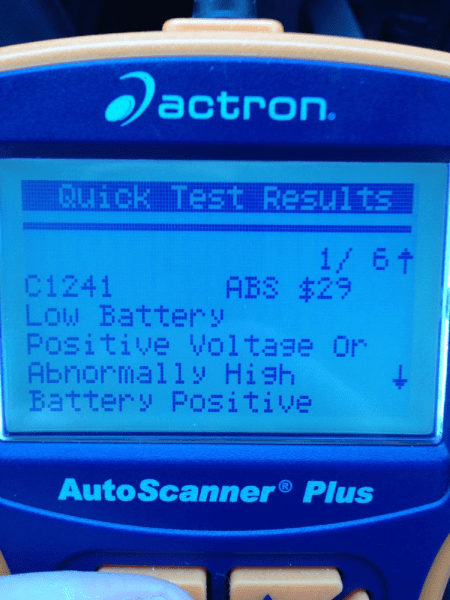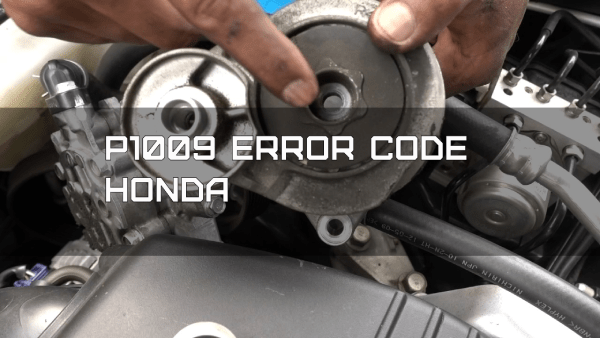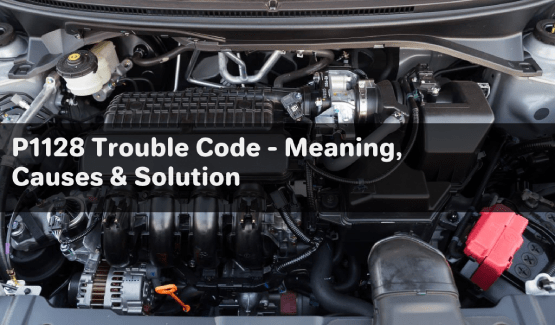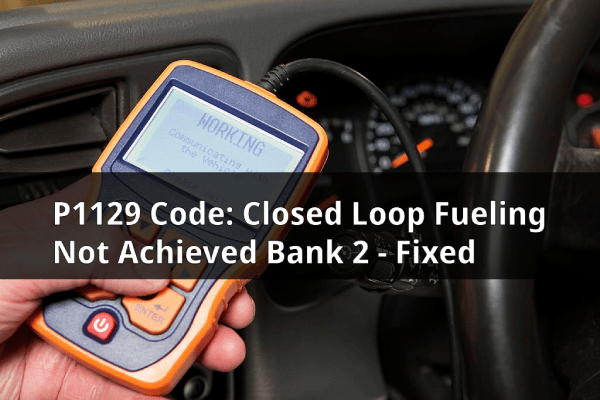P1101 trouble code is peculiar to the Chevy Cruze and indicates an issue with the MAF sensor.
This malfunction affects the car’s drivability, causing loss of power and even bad fuel consumption. Fixing the P1101 should not be shied away from, as it could be a symptom of more underlying issues.
Confused about how to diagnose and fix the code? Don’t be because I have compiled this guide on the meaning, causes, and solution of the p1101 in Chevy Cruze.
What Does It Mean?
A P1101 code for Chevy Cruze means the Mass Air Flow (MAF) sensor is out of the self-test range. It often indicates a faulty MAF sensor and can be caused by a worn-out or faulty timing chain, faulty actuator, broken tensioner, or even dirty oil levels.

First, a look at how the MAF sensor works is essential to understand how the code works. MAF sensor is one of the sensors in the engine responsible for measuring and monitoring the level of the mass flow rate of oxygen going into the combustion chamber.
Also, it works alongside the Engine Control Unit (ECU) to help deliver an accurate air and fuel mixture ratio to the engine.
The sensor gathers this data and sends it to the ECU in the form of electrical pulses to help it understand the internal conditions of the engine.
Air going into the engine is dynamic. The density and temperature vary depending on many factors, including the driving environment. Its dynamic nature affects the level of combustion it will create together with the fuel.
Now that we understand what the MAF sensor does and its importance, we can move on to understand how to trigger the P1101 code.
Whenever you turn on the engine of your Chevy Cruze, the MAF sensor performs a self-diagnostic test. Once the result is out of range, the trouble code P1101 will come up during diagnostics.
When this code is diagnosed, you must attend to the cause immediately. Here are some symptoms that accompany the diagnosis code.
Related content: Why would a car run better with an unplugged mass air flow sensor?
Symptoms
So what exactly are the symptoms of a P1101 error code? Here are some more common ones; however, you might notice additional anomalies with the vehicle.
1. Loss of power
Many Chevy Cruze owners who have experienced the code have complained of loss of engine power while the car is running.
Since air/ oxygen is a major component of combustion, lack of it or excessive air will result in loss of power generated by the car.
Once there is a problem with the MAF sensor, the air-fuel ratio will be affected. The result is that the engine will either run rich or lean.
2. Rough idle
When the level of airflow is affected by a problem with the MAF sensor, the car will shake at idle. The ECU cannot determine the level of air the engine needs, causing a fluctuation in airflow and the engine’s performance.
3. Bad Fuel consumption
Your engine is most likely to run rich with a P1011 code. The engine might not receive the right amount of fuel because the ECU is not receiving the right information about airflow into the engine.
In this case, the engine will force more fuel into the combustion area to compensate for the lack of adequate air.
4. Engine Light
Another common symptom of the P1101 code is a check engine light. The light shows that there is something wrong with the engine. When the ECU cannot communicate with the MAF sensor when it is out of range, It triggers the warning light.
Check out our guides on how to fix other Chevy trouble codes: C0561, P00B7, and 7e8 Engine Code.
Causes
After checking out some of the most common symptoms that car drivers experience when dealing with a P1101 code, let’s see what might be the cause.
1. Clogged Air Filter
When your Chevy Cruze throws the code P1101, it could result from the clogged air filter. When the air filter has been used for some time, it is prone to get dirty and clogged by this dirt.
Once the air filter is clogged, enough air will not be able to get into the engine, causing the MAF sensor to give out wrong signals to the ECU.
2. Engine Wiring Issue
Another major cause of the P1101 trouble code is bad wiring. When the wiring connecting the ECU with the MAF sensor goes bad, the ECU will be unable to monitor the airflow going into the engine combustion, which then causes the code to come up.
3. Faulty MAF Sensor
The MAF sensor is just like every other electronic component in the car, and it is prone to corrosion, wear and tear. It is why the sensors need to be checked regularly.
When the MAF Sensor gets bad, there will be no signal to the ECU about the engine’s airflow. It will cause all sorts of symptoms, including checking the engine light and the P1101 code.
4. Leaking Intake Seal
Also, a leaking intake seal can cause the vacuum in your engine to leak. When there is a vacuum leak, the air is diverted to the intake rather than the throttle. It will lead to a wrong reading from the MAF sensor.
5. Faulty Throttle
If your throttle body fails, it usually leads to a false sensor reading. A faulty throttle is usually caused by dirt and will be easily solved by cleaning it.
How to Diagnose
There are various ways to properly diagnose your Chevy Cruze for the trouble code P1101. We recommend following these steps:
- Observe your vehicle for the symptoms mentioned above. If your vehicle shows most of the symptoms with a triggered P1101, it is most likely a faulty MAF sensor.
- Physically examine the MAF sensor for damages. The MAF sensor is located between the air filter and intake manifolds. You are looking for signs of corrosion, cracks, or other damage to the sensor.
- Run a diagnosis using an OBD-2 scanner connected to your vehicle. This tool requires a bit more experience and can be confusing if you are unfamiliar with it.
How to Fix
Since there are various causes of the P1101 trouble code, there are also some ways to solve the code. The procedure you will use to solve the code depends on the cause of the trouble code. Below are ways to fix a P1101 code.
Clean the MAF Sensor
There is a possibility that cleaning the MAF sensor might fix the problem. There are some cheap MAF sensor cleaner alternatives that might fix your problem. If this does not work, you might need to replace the sensor.
Replace the MAF Sensor
If a damaged MAF sensor causes trouble, the best way to solve this problem is to change the MAF sensor. The replacement will cost you $300 or less, depending on factors like brand, labor, and more.
Clean or replace the air filter
Clogged filters are a major cause of the P1101 code. To solve this, you will have to take out the air filter and get it cleansed. If the filter is damaged, you will have to replace it with a new one.
Fix Leaking Intake Seal
When the intake seal is damaged, the code will come up. The best way to solve this problem is to replace the intake manifold. The cost of this could range between $500 to $600.
Clean throttle body
Also, if your throttle body is faulty due to accumulated dirt, you must get it cleaned. If it is damaged, then replace it.
Can You Drive with the P1101 Code?
The symptoms of a P1101 code will allow you to keep driving the vehicle, but that does not mean you should ignore the problem. The more you avoid fixing your car, the more you expose yourself to some huge repair bills. It is best to repair the vehicle at your earliest convenience to prevent further damage.
It is possible to have a mobile mechanic come to you and do the repair if you do not find the time to drive the car to a repair shop. However, a mobile mechanic might charge you more.
Conclusion
As we have discussed already, the major cause of the p1101 code is a faulty Mass flow sensor. Other causes could include clogged air filters, wiring issues, leaking intake seals, etc. It comes with some obvious symptoms that will affect your car’s drivability. Some of these symptoms include loss of power, rough idling, and more. We recommend you get your car fixed on time to avoid further damage.
Mark is a senior editor for Mechanic Ask, creating tech-focused articles about diagnostics, tools, and new auto servicing methods. He attends industry shows to stay current. With a mechanical engineering degree, Mark is able to translate complex technical details into explanations understandable for shop owners and technicians. His articles help shops improve processes, reduce costs, and boost productivity.









